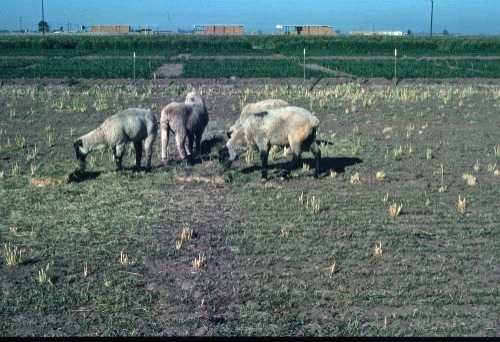Some tips on grazing for invasive plant control



The owner of the livestock (called the grazier) usually has a different goal for the animals then you do. The grazier wants the animals to fatten up for the market. You want them to eat weeds. If the weeds are what the animals want to eat and they are nutritious, then your goals are compatible. It is more often the case that the weeds are not desirable and the animals will try to eat everything else instead.


The grazier wants to turn the animals out to graze when she/he arrives at your site. You want the animals to stay in a penned area for 2-4 days eating hay and voiding all of the weed seed from their last site. You also want the pen in case of rain, rather than allowing the animals to wander around in the mud and trample small plants.
Livestock do not often eradicate weeds; they just remove above ground stems and foliage. The San Diego Weed Management Area tried goats for control of perennial pepperweed (Lepidium latifolium) a few years ago. The grazier promised that the goats would eradicate the weed if they were allowed to graze it twice in the summer for two weeks each time. They rented the goats to the WMA for $300/acre. The goats removed about ½ of the stems and foliage and a year later it looked like it had never been grazed.
Graziers are used to driving hard bargains, so make sure you know what you want and are ready to insist on it.
Don't get me wrong, livestock can be very effective and useful in large-scale weed management if they are suitable consumers of the target weed(s) and they are managed properly. I collaborated with several UC scientists to study sheep grazing as a weed control practice in newly planted alfalfa in the low desert. The sheep were very successful, as good as the herbicide alternative. Citations for three of our papers are on this website page (near the bottom). This short blog only presents some of the issues, especially those I have personal experience with. After spending eight years studying sheep grazing, I like to say that I know far more about sheep than I ever wanted to.
